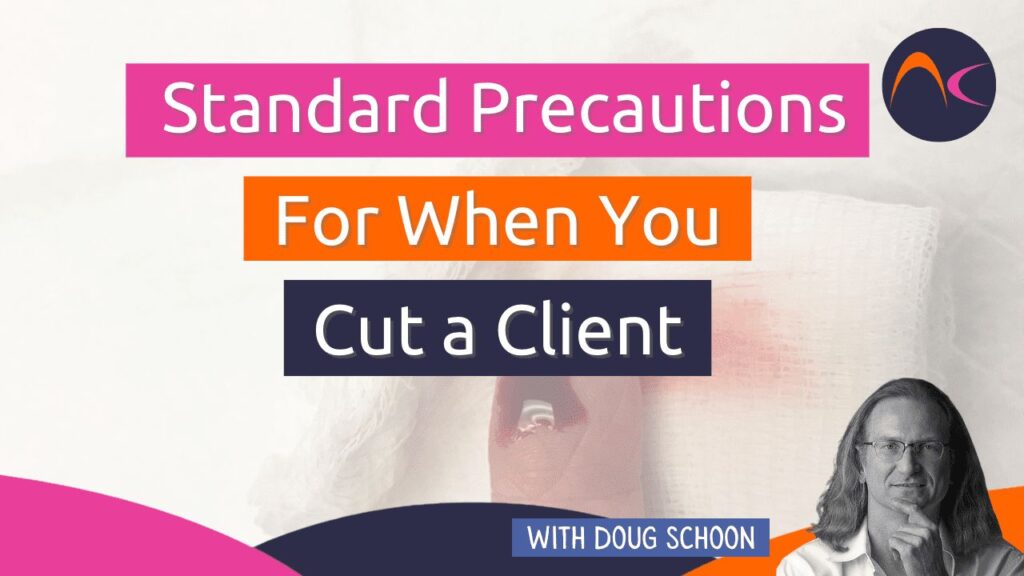Nail professionals are usually careful to maintain the integrity and health of their client’s nails and skin. But accidents happen and you may cut a client. What should you do in that case?
Any cuts, abrasions, or breaks in the skin can create exposure risks to visible blood or body fluids. You should assume that these contain infectious organisms from which you must protect yourself and your clients from exposure. I’ll generally refer to these organisms as “pathogens”. Some typical examples of pathogens are the flu and cold virus or hepatitis B virus. However, of these three, only hepatitis B is a pathogen transmittabl from person to person by direct contact with infected blood or body fluids. These types of pathogens are called “blood-borne pathogens”. When it comes to blood-borne pathogens, you should err on the side of caution whenever there is a potential for exposure to cuts, abrasions, wounds, bruises, etc.
There are several standards that make recommendations designed to protect against the transmission of pathogens. One that you should be aware of is called the “Standard Precautions”, which are written and published by the US Center for Disease Control (CDC). You can read more about Standard Precautions on many Internet health-related sites; I’ll outline how to use these precautions when you cut a client and exposure occurs in your nail salon. In this case, exposure means blood or fluids draining from a cut, wound, or abrasion. Once exposure occurs, the recommended precautions are to immediately stop the service and, after apologizing to the client, do the following:
- Put on a fresh pair of disposable gloves. I recommend nitrile or vinyl gloves.
- Gently but firmly put pressure on the area with cotton to stop the bleeding.
- Apply an antiseptic to the area.
- Apply an adhesive bandage to completely cover the wound.
- Clean and disinfect your workstation using a disinfectant approved for salon use.
- Dispose of all throw-away items such as table towels, contaminated nail files, and cotton balls into a plastic trash bag and seal the bag completely closed before disposing of it in the trash.
- The last thing is to carefully remove your gloves and put them into a plastic bag.
Finally, instruct the client to watch the injured area carefully and to seek medical attention if the area becomes red, inflamed, or painful because these could be signs of a potentially serious infection that, if not promptly treated, could worsen.


